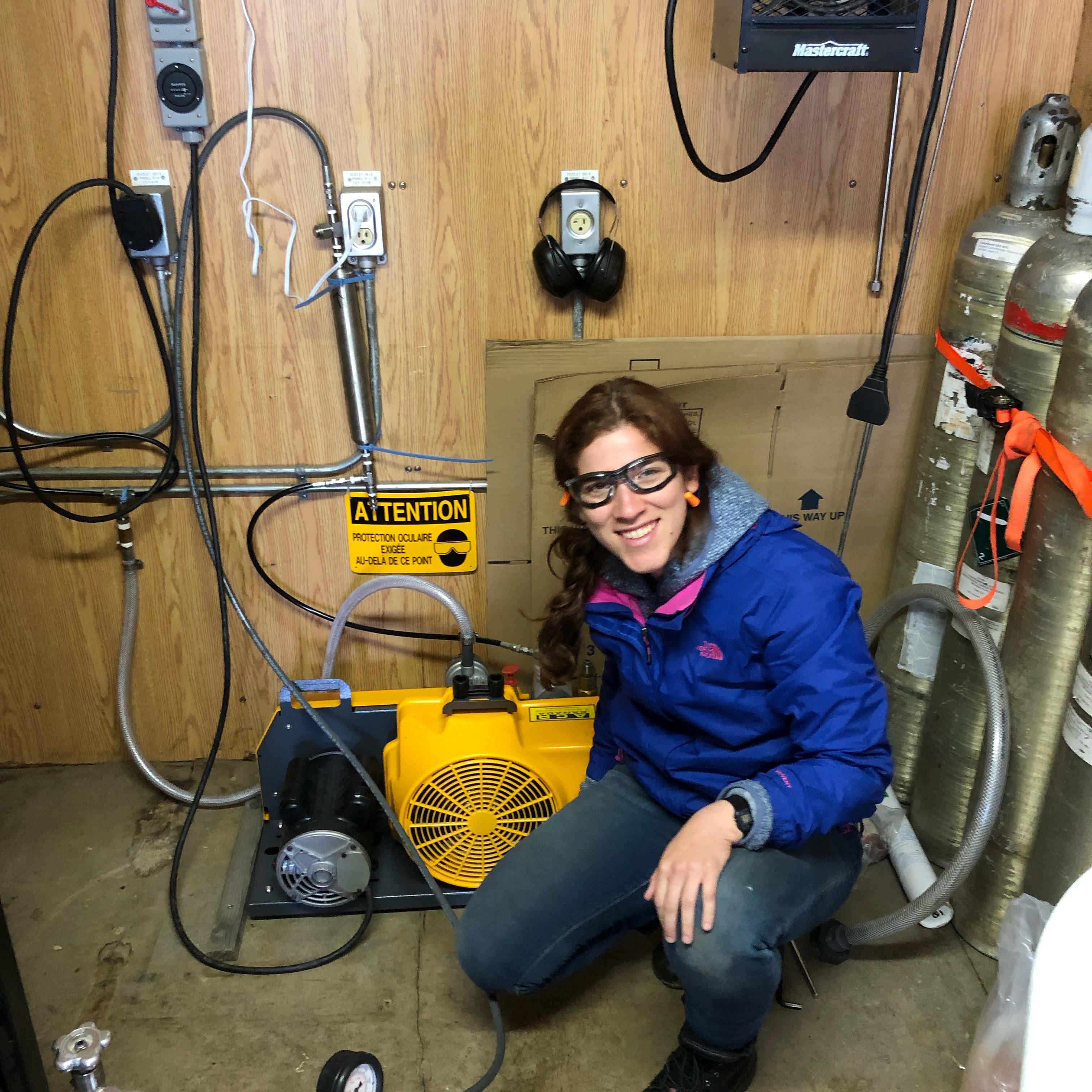The Earth is currently experiencing a profound global-scale change in its carbon and water cycles caused by anthropogenic greenhouse gas emissions and global warming. To predict and mitigate these changes, we need a better understanding of the processes controlling these biogeochemical cycles, both in the present and under different climate conditions in the past. My research works to develop and apply isotopic analyses of specific molecules as a tracer for changes in the carbon and water cycles. The ratios of carbon and hydrogen isotopes in individual molecules provide excellent tracers for the movement and metabolism of carbon and water across time and space. My research program is currently organized around applying isotopic geochemistry in three overlapping themes: 1) Greenhouse gas biogeochemistry; 2) Freshwater carbon cycling; and 3) Sedimentary archives of environmental change
Greenhouse gas biogeochemistry

In order to predict and mitigate future climate change, we need a better understanding of greenhouse gas emissions from both human and natural sources. Methane is a particularly powerful greenhouse gas, but its emission sources remain relatively poorly understood. Research in my lab is focusing on developing and integrating isotopic tracers for methane sources, including both natural and anthropogenic emissions to the atmosphere. A major focus of this research is studying permafrost methane emissions, including both the sources of carbon emitted and the processes controlling its release from ponds and lakes. We have also collaborated with Environment and Climate Change Canada to perform the first 14C measurements of atmospheric methane in Canada. The primary target of this research is to quantify regional fugitive emissions of methane from oil and gas extraction in the oil sands region of Alberta.
Beyond methane, members of my group are studying other greenhouse gases, including research on the uptake of volcanic CO2 by trees, and on N2O emissions from permafrost peatland lakes.
Freshwater carbon cycling

Freshwater ecosystems are a critical component of the global carbon cycle that are sensitive to environmental change. Isotope measurements are valuable for understanding the processes that control the freshwater carbon reservoirs and fluxes. Much of my current research on this topic is focused on permafrost environments, given the potential for a large carbon-cycle feedback as thawing permafrost releases carbon that has been stored for thousands of years or more. We are focused on developing a clearer understanding of the geochemical and microbial processes that control the transport of old carbon from thawing permafrost to ponds and lakes, and the fate of that carbon once it reaches those environments. A major focus of this work is using radiocarbon measurements of different molecules, gases, and bulk sediment fractions to characterize the transport and storage of old carbon in these ecosystems. We are also carrying out similar work in temperate and tropical lake basins.
Sedimentary archives of environmental change:

Lake sediments provide an excellent record of past environmental change on human timescales, and offer an opportunity to study both how human societies have shaped and been shaped by their environment. Much of our work in this topic is focused on lakes in Central America. We are developing analyses of organic geochemical markers for human waste, and combining these measurements with climate proxies in lake sediment cores. Members of my research group are also developing projects to better calibrate and apply plant wax hydrogen isotope measurements as tracers of past climate change in the Arctic Ocean.
On longer time scales, past periods of globally warm climate in Earth’s history provide important analogues for understanding future global warming. Previously I have analyzed isotopic measurements of carbonate fossils to study the distribution of ocean temperatures during the Eocene epoch, with a particular focus on understanding why temperature differences between the poles and the tropics were much smaller than in the current climate. More recently my group has performed some of the first isotopic analyses of plant-wax lipids from the Cretaceous-Paleogene Boundary to understand water and carbon-cycle changes associated with one of the Earth’s largest mass extinction events.
